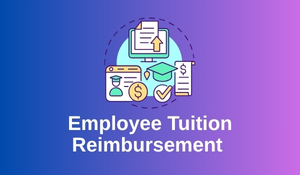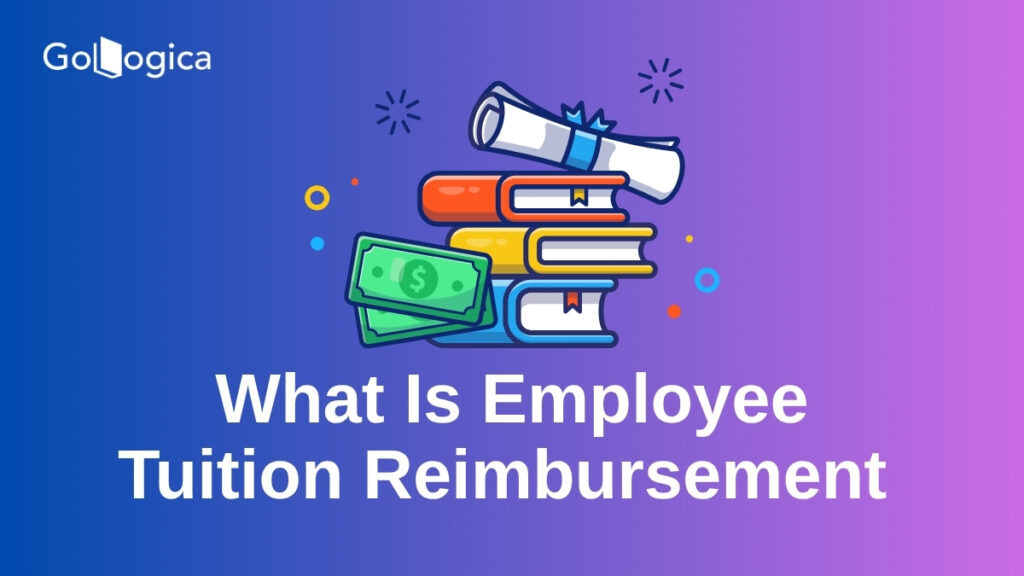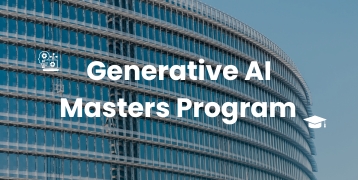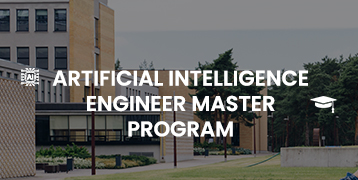
Table of content
- How Does Tuition Reimbursement Work
- Eligibility Requirements and Program Criteria
- The Reimbursement Process: Steps and Timelines
- Types of Education and Expenses Covered
- Tuition Assistance vs. Tuition Reimbursement: Key Differences
- Common Features of Tuition Reimbursement Programs
- Degree and Course Eligibility
- Grade and Performance Requirements
- Repayment Clauses and Retention Agreements
- Why Tuition Reimbursement Matters for Employees
- Financial Relief and Reduced Education Debt
- Career Advancement and Skill Development
- Increased Job Satisfaction and Engagement
- Why Tuition Reimbursement Matters for Employers
- Attracting and Retaining Top Talent
- Enhancing Workforce Skills and Productivity
- Reducing Turnover and Recruitment Costs
- Tax Advantages for Employers
- Challenges and Considerations in Implementing Tuition Reimbursement
- Underutilization and Employee Awareness
- Budgeting and Program Limitations
- Policy Design and Administration
- Best Practices for a Successful Tuition Reimbursement Program
- Clear Communication and Accessibility
- Aligning Education with Business Goals
- Leveraging Technology for Program Management
- Conclusion: The Strategic Value of Tuition Reimbursement
How does teaching reimbursement work
Reimbursement of teaching is an advantage of employees where an employer covers the cost of education of an employee or all costs. Usually, companies offer it to support relevant career development, application or further education for the role of the employee.
Here is described how it works Employee signs up for an approved course or study, pay for teaching in advance, and often at a successful ending require minimal grade that they offer and evidence of expenses. The employer then refunds a percent or full amount based on his policy.
Most companies have eligibility criteria, such as employment length or course relevance. After receiving the benefit, there may also be annual reimbursement limits and agreements that require employees to be in the company for a certain period.
Overall, reimbursement of teaching is a win, which helps employees grow professionally, while employers create more efficient workforce.

Eligibility Requirements and Program Criteria
Reimbursement of teaching is an advantage for company proposed advantage that supports employees in promoting education. In order to achieve qualification, employees usually have to be full -time or part -time with a minimum time and should maintain good job performance. The course should be related to the role of an employee or development of a career and should be from reputable institutions. Most programs require pre-infusion, a minimum passage class is usually B or higher, and has an annual reimbursement area. Some employers also require an obligation to live in the company after a certain period. The program comes both the development of the employee and the company’s long -term goals.
The Reimbursement Process: Steps and Timelines
The reimbursement process for teaching usually begins with an employee submitting the course approval request to HR or their manager before registration. When approved, the employee completes the course and provides the necessary documents such as ties, receipts and proof of payment. After submitting these documents, the reimbursement request is reviewed. If all criteria are met, the approved amount is processed through wages or fees. The deadline varies from the company, but the refund is generally released within 2-6 weeks after sent. Clear communication and timely documents help ensure a steady and effective reimbursement process for both employers and employers.
Types of Education and Expenses Covered
Teaching reimbursement programs support various educational paths that increase employees skills and correspond to organizational goals. Employers usually cover the degree programs offered by affiliated, bachelor and masters as well as professional certificates and job -related courses. Some companies also include online courses, sustainable educational units and technical training that contribute to job performance and career development.
Covered expenses often include school fees, registration fees, books and necessary teaching materials. In some cases, the examination fee for certification programs is also refunded. However, not -related costs from education, such as travel, food or alternative supply, are usually excluded. Many programs operate within defined limits, either by reimbursement of a specific percentage of expenses or the annual maximum amount.
By providing coverage for relevant education and necessary expenses, motivating reimbursement programs for teaching to learn how to learn how to learn by supporting the organization’s commitment to professional development and internal development.
Tuition Assistance vs. Tuition Reimbursement: Key Differences
Tuition Assistance
Teaching assistance is an employer -financed program where the company directly pays for expenses related to the education of an employee or at the time of registration. This financial assistance helps employees to focus on further education without immediate burden with cost without a package. Employers can directly pay the educational institution or provide funding to the employee before the course starts.
The program usually includes school fees, registration fees, books and necessary material for the courses relevant to the role of an employee or development of a career. Some organizations also support general education that contributes to long -term development. In order to achieve qualification, employees often need to record basic requirements for eligibility such as employment period, job viewing and recognized programs.
Teaching assistance reduces economic stress and promotes skills growth and storage of employees. This is especially beneficial for employees who cannot have the resources to pay advances for education, making it a valuable tool for both workforce development and employees satisfaction.
Tuition reimbursement
Reimbursement of teaching is a program where employees originally pay out of the pockets for educational expenses and then provide proof of completing the course and payment to the employer for repayment. Refund is usually given when the employee completes the course, often requires minimal grade to qualify.
The program usually covers books or exam fees for tuition fees, registration and sometimes books or exam fees such as the current job or career progress for the progress of the employee. Employees should often receive prior approval to registration and compliance with specific guidelines on qualified programs and institutions.
Reimbursement of teaching encourages employees to invest in their education with insurance for financial assistance to fulfill the criteria in the program. This ensures that employees are committed to their roles, while they often involve clauses, who have to live in the company for a certain period after receiving a refund.
Common Features of Tuition Reimbursement Programs
The programs match the company goals and share main functions designed to support education. Most programs require employees to obtain before influence before they enroll in courses, so that education is relevant to their current role or development of careers. The reimbursement is usually conditional on completing the course with a minimal grade, usually a higher.
These programs usually cover expenses such as school fees, registration costs and sometimes books or exam fees, but exclude non-pedagogical expenses such as travel or food. Employers often determine an annual reimbursement limit or maximum amount per course to effectively manage costs.
Several programs include a service agreement, which requires employees to live in the company for a fixed period after receiving a repaid funds. The application and reimbursement process usually involves depositing official ties and receipts within a specific time limit. Overall, these functions balance employee development with the company’s investment, continuously learn and promote storage.
Degree and Course Eligibility
The degree and course specify the qualification criteria that educational programs qualify for reimbursement or assistance for teaching. Employers usually need the course to match the development of the current job or career of the employee. Qualified programs often include job -related professional certificates from affiliated, candidates, master’s degrees and recognized institutions. Unreleased courses from jobs or individual classes of interest are usually excluded. Many companies require employees to get before the influence to confirm the qualification. These criteria ensure that the educational staff supports both development and company goals, which helps maintain the efficiency of the program and the proper use of resources.
Grade and Performance Requirements
This programs usually include specific character and performance standards to ensure that employees show commitment and achieve meaningful learning outcomes. Employees usually need to pass the course to serve minimal class B or better or to qualify for reimbursement. Some programs also accept a passport/failed situation if it meets the criteria of the institute. In addition, employees should maintain satisfactory job performance during the course period. Failure to meet these educational or functional requirements may refuse reimbursement as a result of errors or claim to repay the amount already received. This standard professional development helps to coordinate educational progress with goals.
Repayment Clauses and Retention Agreements
Several reimbursement programs for teaching include repayment segments and storage agreements for protecting the employer’s investment. Reporting segments require employees to repay the reimbursement amount. If they leave the company within a specified period after completing education, often occurs for one to three years. Representative agreements oblige legally employees to stay employed for a fixed time after receiving teaching benefits. These measures encourage employees to live in the company, which helps employers to maintain effective talent and to justify educational costs. Such agreements balance employees’ development opportunities with organizational involvement and reduce the risk of sales.
Why Tuition Reimbursement Matters for Employees
Reimbursement of teaching is a valuable advantage that helps employees grow professionally without stress of advance education costs. This makes higher education and skills development more accessible, so that employees can pursue their career while working. By reducing the financial burden, the employee inspires to pursue relevant courses that improve their job performance and future opportunities. In addition to financial assistance, reimbursement of teaching suggests that the employer affects the development of the employee, promotes morality and loyalty. This benefit not only strengthens individuals to reach their ability, but also strengthens the relationship for the company, which creates a winning position for both employees and employers.
Financial Relief and Reduced Education Debt
Teaching reimbursement programs provide valuable financial relief by helping employees cover the costs of education and reducing the need for a loan or expenses outside the pocket. This support makes higher education or professional certificates cheaper and accessible, reduces the burden of educational debt. When reimbursing teaching and related expenses, employers help to avoid depositing large loans, so that they can focus on learning and the development of careers without financial stress. Ultimately, this benefit not only supports personal development, but also promotes long -term financial well -being, making education a practical and achievable goal for many workers.
Career Advancement and Skill Development
Teaching programs play an important role in helping employees grow professionally. By supporting sustainable education, these programs enable new skills, expand knowledge and remain to date with industry trends. It not only improves confidence, but also prepares them for high responsibility and leadership roles in the organization. Investing in skills development through education increases job satisfaction and motivation, and employees feel valuable. Ultimately, it leads to better career opportunities and helps companies create a more competent, adaptable working group that is ready to meet future challenges.
Master the future of technology with Artificial Intelligence Training, your gateway to smarter solutions and innovation.
Increased Job Satisfaction and Engagement
Offering tuition reimbursement or assistance programs can significantly boost employees job satisfaction and engagement. When employees feel supported in their personal and professional growth, they tend to be more motivated and committed to their work. Access to education opportunities shows that the company values their development, which strengthens loyalty and morale. As employees acquire new skills and knowledge, they become more confident and productive in their roles. This positive cycle not only benefits individuals but also creates a more energized, engaged workforce, ultimately leading to better overall performance and a healthier workplace culture.
Why Tuition Reimbursement Matters for Employers
Supporting employees helps employers help create a skilled and inspired workforce. When companies invest in the team’s learning, this employee promotes commitment, satisfaction and loyalty for development. Well -educated employees provide new ideas and improved skills that improve performance and encourage innovation. This support helps to fulfill skill intervals, reduce recruitment costs and reduce sales. In addition, the provision of educational benefits promotes the culture of continuous development, making the company more attractive to both current and potential employees. Ultimately, this investment strengthens the organization and contributes to the long -term success.

Attracting and Retaining Top Talent
Providing reimbursement of reimbursement and education is a powerful way for companies to attract and retain the best employees. When organizations invest in the development of their team, it shows that they affect the development and future of their people. This not only attracts inspired candidates who want to learn and move on, but also encourages current employees to stay for a long time. Providing education opportunities creates a positive work culture, improves loyalty, and increases job satisfaction. Today’s competitive labor market, which supports continuous education, helps companies build a skilled, committed workforce that improves success and is committed to long-term races.
Enhancing Workforce Skills and Productivity
Teaching plays an important role in investments and productivity in employee education through reimbursement or paid programs. When employees gain new knowledge and profits, they become more confident and effective in their roles, which improves job performance. Continuous learning helps workers adapt to converted technologies and industry trends, making the organization more competitive. In addition, educational benefits promote motivation and commitment to employees, creating a positive work environment. By supporting commercial growth, companies not only develop a skilled workforce, but promote loyalty, reduce sales and increase longer success.
Reducing Turnover and Recruitment Costs
Providing reimbursement and assistance programs for teaching helps companies reduce employees activities by investing in their development and career development. When employees feel supported in promoting education, they are more likely to be loyal and busy. This loyalty reduces the frequency of job changes, saving important costs related to recruitment, employment and training of new employees. By promoting the culture of learning and development, employers not only maintain skilled workers, but also attract talent in search of long -term opportunities. Ultimately, these programs create a win-win situation, employees grow professionally, and companies reduce expensive sales and recruitment expenses.
Tax Advantages for Employers
Employers offering reimbursement programs for teaching can benefit from important tax benefits. According to current tax rules, companies can reduce the cost of educational assistance such as commercial expenses, which reduces their total taxable income. In addition, employers can give employees to some extent per year in tax -free teaching assistance to some extent per year, without taxable income. This makes reimbursement programs for teaching a cost-effective way of investing in employees’ development for companies. These tax benefits encourage organizations to promote education and skills training, promote the growth in the workforce, manage expenses effectively.
Challenges and Considerations in Implementing Tuition Reimbursement
Employers can get many tax benefits by offering reimbursement programs for teaching. According to the IRS guidelines, employees educational costs are usually cut that improve job skills or maintain professional qualifications as a commercial expenditure, which helps to reduce taxable income. In addition, many programs allow employers to provide a certain amount, which gives employees per year , which makes this gain attractive without increasing the taxable income. This helps the tax cutting companies to manage their expenses by supporting employee development. By investing in labor training, employers increase productivity and maintain talent and all optimize the tax status. These economic incentives encourage companies to continuously learn and promote professional growth.
Underutilization and Employee Awareness
Many employees do not benefit full from reimbursement programs for teaching, as they are unaware of the benefits or confuse the process. When information on qualification, coverage and application stages are not clear or easily accessible, participation is reduced. Employers who clearly communicate these opportunities and simplify the process help more employees reach educational support. Providing guidance and promoting the program encourages professional development and skills development. To raise awareness in favor of both employees and the company by promoting more knowledgeable, motivated and loyal workforce.
Budgeting and Program Limitations
Many companies put financial restrictions to keep educational benefits permanent. They often establish an annual or per work maximum, how much reimbursement can be done, which ensures proper access when managing expenses. These programs can also limit coverage in certain courses, degree programs or recognized schools to match business goals and maintain quality. The time limit for submitting reimbursement requests is usually used to keep the process organized. By defining these limits, employers support employees development together with maintaining a responsible budget, so that the program can come to more and more employees over time over time.
Policy Design and Administration
Designing and managing a reimbursement policy for teaching requires clear guidelines to ensure justice and efficiency. The policy should emphasize eligibility criteria, covered expenses, approval procedures and reimbursement limits. It is important to convey the expectations of character, course relevance and documentation. The administration includes tracking requests, which confirm the implementation of the course and the payment immediately. The usual review program helps combine the company’s goals and employees needs. Well designed policy encourages participation, supports career growth and protects the company’s investment by determining clear rules and smooth processes, and promoting a positive learning culture in the organization.
Gain the expertise to manage enterprise applications efficiently with PeopleSoft Administration training your path to becoming a skilled IT professional.
Best Practices for a Successful Tuition Reimbursement Program
In order to ensure efficiency, a reimbursement program for teaching must begin with clear communication and adapt to organizational goals. Define transparent eligibility criteria and streamlines The application and approval process to make it available to employees. Focus on financing courses and certificates that directly support career development and job performance. The treatment of employees at the time of reimbursement creates trust and satisfaction. Review the results of the program regularly to assess the value and make necessary improvements. Encouraging management support and promoting a culture that gives significance for continuous learning, further improves participation and commitment, which results in long -term benefits for both employees and organization.
Clear Communication and Accessibility
Employees should have a clear understanding of how the program for reimbursement of teaching work including qualification, application phase, time limit and necessary documents. Providing this information through internal platforms, manual or regular HR orientation ensures that everyone is well informed. Easy access to the details of the program allows employees to participate without confusion in all departments and places. Being a specified contact person or support team helps solve personal questions and secure navigation through the process. When communication is transparent and information is easily accessible, the employees feel more confident and more likely to take full advantage of the benefits of the program.
Aligning Education with Business Goals
A well -structured reimbursement program for teaching should coordinate employee education with overall business goals. When organizations support learning that increases the relevant skills directly to operations, they create more competent and ready for the future. Encourages employees to promote courses in areas such as management, technology or industry -specific knowledge that learning investments contribute to development and innovation in the company. This adjustment not only maximizes the return, but also strengthens employee commitment and loyalty. By combining educational development with strategic purposes, companies can develop internal talent pipelines, reduce the cost of working and remain competitive in a developed business environment.
Leveraging Technology for Program Management
Using technology to manage reimbursement programs for teaching flows procedures and improves efficiency. Companies can implement HR software or learning management system to automate tasks such as application tracking, document submission, approval and reimbursement. Digital platforms provide real -time visibility in the use, budget and compliance with the program, which reduces administrative cost. Employees have benefits to using user -friendly portals, upload grades and monitor the reimbursement status. Automatic reminder and workflakes ensure timely treatment and communication. By taking advantage of technology, organizations can manage teaching programs more efficiently, increase employees experience, and ensure adaptation to learning and development goals while maintaining openness and accuracy in the administration.
Conclusion: The Strategic Value of Tuition Reimbursement
Reimbursement of teaching is a great way for employees to promote education by receiving financial assistance from their employer. By covering qualified expenses after completing the course, it encourages skills development and career advancement. The process usually involves receiving pre-approval, completing courses, and presenting the necessary refund documents. Apparent guidelines, deadlines, and storage agreements help both the company and the employees benefit from the program. At GoLogica, we support continuous learning and believe understanding how tuition reimbursement works can open doors to better opportunities, greater job satisfaction, and long-term professional success in today’s competitive career landscape.









